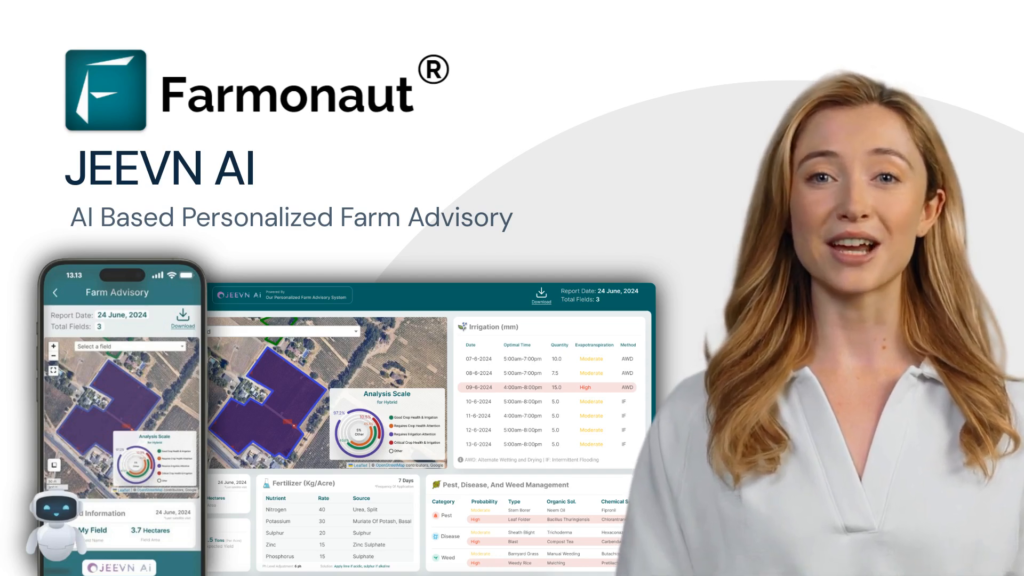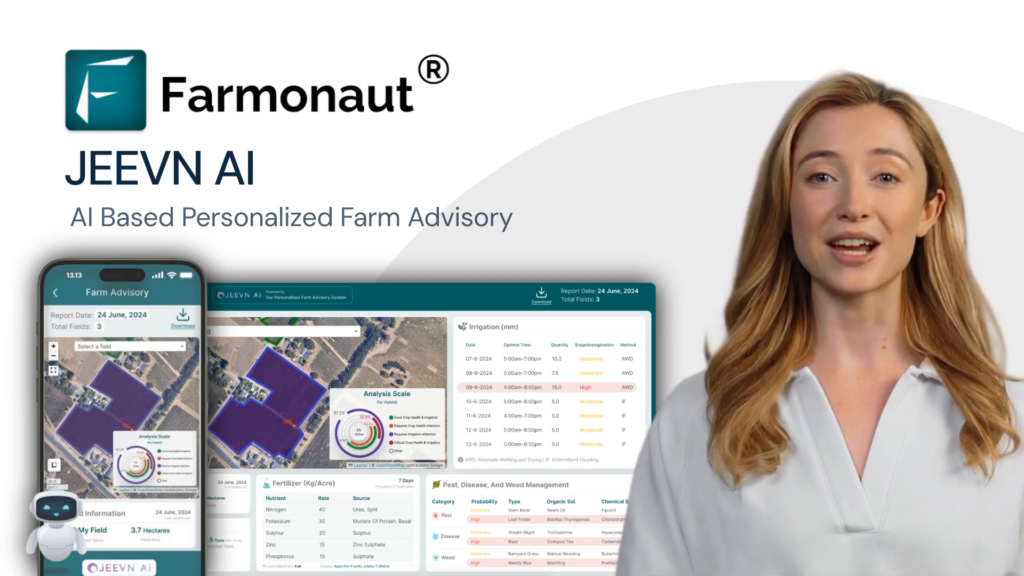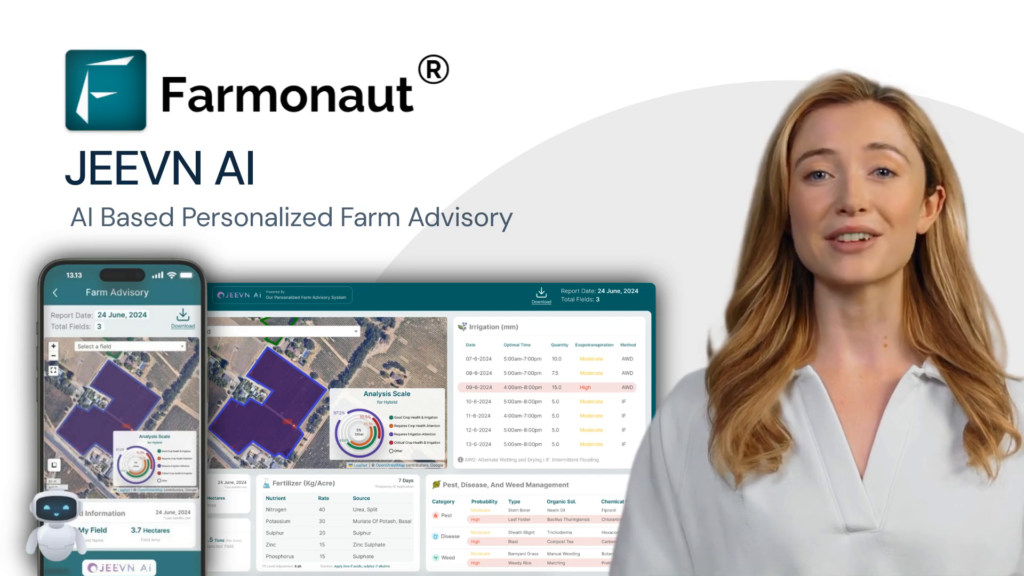Revolutionizing Iowa Agriculture: InsectNet’s AI-Powered App for Real-Time Pest Identification and Smart Farming
“InsectNet’s AI-powered app boasts a 96% accuracy rate in identifying insects across 2,500 species.”
In the heart of America’s Corn Belt, Iowa farmers are experiencing a technological revolution that’s transforming the way they manage pests and protect their crops. We’re excited to introduce you to InsectNet, a groundbreaking insect identification app that’s changing the face of agriculture technology and pest control. As we delve into this innovative solution, we’ll explore how it’s reshaping farming practices and enhancing crop resilience in the face of evolving environmental challenges.
The Rise of AI in Iowa Agriculture
Iowa, known for its vast cornfields and soybeans, has long been at the forefront of agricultural innovation. Now, with the introduction of InsectNet, we’re witnessing a new era of smart farming that combines the power of artificial intelligence with the expertise of agricultural scientists. This AI-powered tool is not just another app; it’s a comprehensive solution that addresses one of the most pressing issues in modern farming: accurate and timely pest identification.
Developed by a team of researchers at Iowa State University, InsectNet utilizes advanced machine learning algorithms to provide real-time insect classification. With an impressive accuracy rate of 96% across 2,500 species, this tool is set to revolutionize how farmers approach pest management and crop protection.
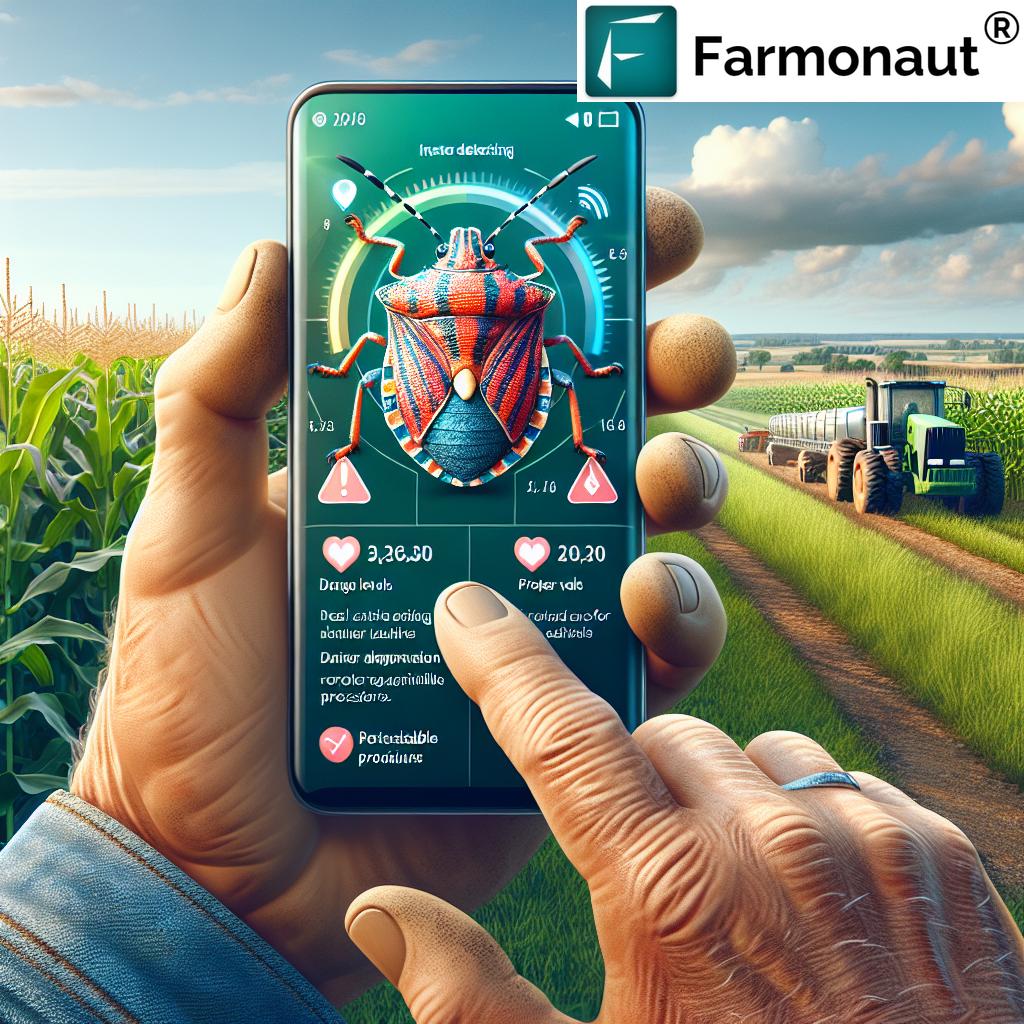
How InsectNet Works: A Closer Look at the Technology
At its core, InsectNet is powered by a sophisticated machine learning model trained on a massive dataset of 12 million insect images. This extensive database allows the app to recognize and classify insects with remarkable accuracy, even in their various life stages—from egg to adult.
Here’s how Iowa farmers can use InsectNet:
- Capture: Using a smartphone, farmers can take a photo of any insect they encounter in their fields.
- Upload: The image is then uploaded to InsectNet’s web-based interface.
- Analyze: The AI processes the image, comparing it against its vast database.
- Identify: Within seconds, the app provides a detailed identification of the insect species.
- Inform: Farmers receive information on whether the insect is beneficial or harmful to their crops.
This process empowers farmers to make informed decisions about pest management swiftly and accurately, potentially saving time, money, and crops.
The Impact on Iowa’s Agricultural Landscape
Iowa’s agricultural sector, which contributes significantly to the state’s economy, stands to benefit immensely from InsectNet. By providing farmers with real-time, accurate insect identification, the app enables:
- Faster response to potential pest threats
- More targeted and efficient use of pesticides
- Better conservation of beneficial insects
- Improved crop yields and quality
- Enhanced overall farm management
For instance, Iowa farmers dealing with common pests like armyworms, cutworms, and stink bugs can now quickly identify these threats and take appropriate action. Similarly, beneficial insects such as lady beetles and mantises can be recognized and protected, maintaining a healthy ecological balance in the fields.
Beyond Pest Control: InsectNet’s Broader Applications
“The InsectNet database contains an impressive 12 million insect images for accurate pest identification and classification.”
While InsectNet’s primary focus is on agricultural pest management, its potential extends far beyond the cornfields of Iowa. The app’s versatility makes it a valuable tool for various sectors and applications:
- Invasive Species Detection: Border control agents can use InsectNet to identify potentially harmful invasive species, preventing their spread into new ecosystems.
- Ecological Studies: Researchers conducting field studies can quickly identify and catalog insect species, streamlining their data collection process.
- Biodiversity Monitoring: Conservation efforts can benefit from InsectNet’s ability to track and identify insect populations, providing insights into ecosystem health.
- Educational Tool: Schools and universities can use the app to teach students about entomology and biodiversity in a hands-on, interactive way.
As we continue to explore the capabilities of InsectNet, it’s clear that this technology has the potential to transform not just agriculture, but also our understanding and management of insect populations on a broader scale.
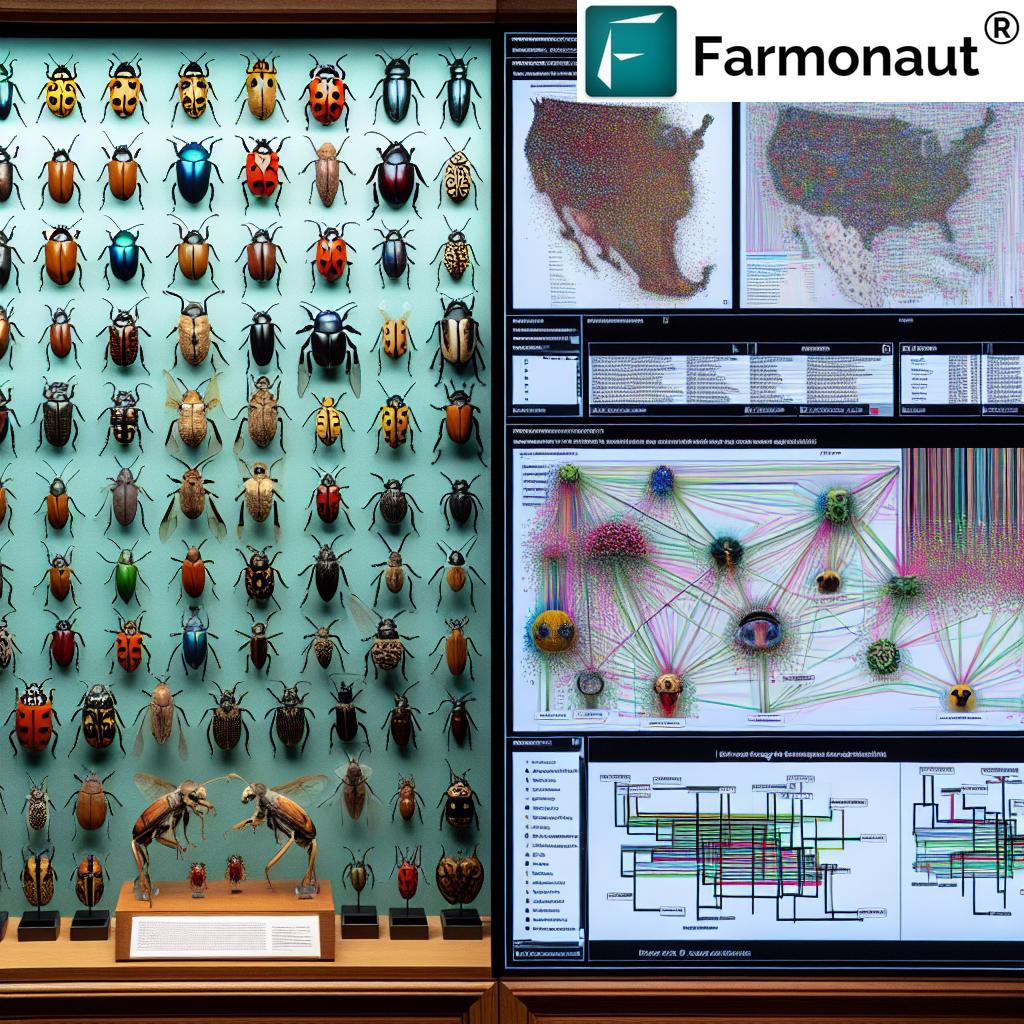
The Science Behind InsectNet: A Collaborative Effort
The development of InsectNet was no small feat. It took a dedicated team of experts approximately two years to bring this revolutionary tool to life. The project brought together:
- Agronomists with deep knowledge of crop science and pest management
- Computer engineers skilled in developing robust, user-friendly interfaces
- Statisticians to ensure the accuracy and reliability of the data
- Data scientists to manage and analyze the massive image database
- AI specialists to develop and refine the machine learning algorithms
This interdisciplinary collaboration highlights the power of combining agricultural expertise with cutting-edge technology. The result is a tool that not only identifies insects but also understands their role in the complex ecosystem of a farm.
Adapting to Regional Needs: InsectNet in Iowa
One of InsectNet’s most impressive features is its ability to adapt to regional needs. In Iowa, where specific insect species significantly affect agricultural productivity, the application utilizes around 500,000 insect images to deliver tailored insights.
This localization ensures that Iowa farmers receive information most relevant to their specific challenges. For example:
- Identification of common Iowa crop pests like corn rootworms and soybean aphids
- Recognition of beneficial pollinators such as various bee species crucial for Iowa’s agriculture
- Detection of emerging pest threats that may be new to the region due to climate change
By focusing on the insects most relevant to Iowa’s agricultural landscape, InsectNet provides a level of precision and relevance that generic pest identification tools simply can’t match.
Comparing Traditional and AI-Powered Pest Management
To truly appreciate the impact of InsectNet on agricultural practices, let’s compare traditional pest management methods with this AI-powered approach:
| Aspect | Traditional Method | InsectNet AI Method |
|---|---|---|
| Identification Accuracy | Varies based on individual expertise | 96% accuracy across 2,500 species |
| Time Required for Identification | Can take hours or days, requiring manual research | Real-time identification within seconds |
| Species Coverage | Limited to expert knowledge | Covers 2,500 species with potential for expansion |
| Adaptability to Regional Needs | Requires local expertise | Easily adaptable with region-specific datasets |
| Data Collection Capability | Manual, time-consuming process | Automated, contributing to a growing database |
| Integration with Smart Farming | Limited integration capabilities | Seamlessly integrates with other smart farming tools |
| Cost-Effectiveness | Can be expensive, requiring ongoing expert consultation | More cost-effective with one-time app investment |
| Environmental Impact | May lead to overuse of pesticides due to misidentification | Promotes targeted pest control, reducing environmental impact |
This comparison clearly illustrates the advantages of InsectNet’s AI-powered approach, showcasing its superior accuracy, efficiency, and adaptability compared to traditional methods.
The Future of Farming: InsectNet and Beyond
As we look to the future of agriculture in Iowa and beyond, it’s clear that AI-powered tools like InsectNet will play an increasingly important role. The success of this application opens the door to similar innovations in other areas of farming, such as:
- Weed identification and management
- Plant disease detection
- Soil health analysis
- Crop yield prediction
The researchers behind InsectNet believe they are close to creating a comprehensive solution for a variety of identification and classification challenges within agriculture. This holistic approach to farm management could revolutionize the industry, making farming more efficient, sustainable, and productive than ever before.
Challenges and Considerations
While InsectNet represents a significant leap forward in agricultural technology, it’s important to consider some of the challenges and ethical considerations associated with its use:
- Data Privacy: As farmers upload images to the app, there may be concerns about data ownership and privacy.
- Overreliance on Technology: While AI can be incredibly accurate, it’s crucial that farmers maintain their own knowledge and observational skills.
- Accessibility: Ensuring that all farmers, regardless of technological proficiency or economic status, can access and benefit from this technology.
- Continuous Learning: The AI model must be continually updated to account for new species and changing environmental conditions.
Addressing these challenges will be crucial for the long-term success and widespread adoption of InsectNet and similar technologies.
Integrating InsectNet with Other Smart Farming Solutions
To maximize the benefits of InsectNet, farmers can integrate it with other smart farming solutions. For instance, Farmonaut, a pioneering agricultural technology company, offers advanced, satellite-based farm management solutions that complement InsectNet’s capabilities.
Farmonaut’s platform provides:
- Real-time crop health monitoring
- AI-based advisory systems
- Blockchain-based traceability
- Resource management tools
By combining InsectNet’s insect identification capabilities with Farmonaut’s comprehensive farm management tools, Iowa farmers can create a powerful, integrated approach to smart farming.
For developers interested in integrating these technologies, Farmonaut offers an API with comprehensive documentation.
The Role of Farmers in Shaping Agricultural Technology
As we embrace these new technologies, it’s crucial to remember the invaluable role that farmers play in their development and implementation. The success of tools like InsectNet relies heavily on the feedback and practical insights provided by the farming community.
Iowa farmers, with their deep understanding of local agricultural challenges and decades of hands-on experience, are in a unique position to:
- Provide real-world testing and validation of the app’s accuracy
- Suggest improvements and new features based on their daily needs
- Share knowledge about rare or region-specific insect species
- Help refine the app’s user interface for maximum usability in the field
This collaborative approach ensures that InsectNet and similar technologies continue to evolve in ways that truly serve the needs of the agricultural community.
Education and Training: Empowering Farmers with New Technology
For InsectNet to reach its full potential, it’s essential that farmers receive proper education and training on how to use the app effectively. This involves not just technical training on the app itself, but also broader education on:
- The principles of integrated pest management (IPM)
- The role of beneficial insects in crop ecosystems
- How to interpret and act on the data provided by the app
- Combining AI insights with traditional farming knowledge
By empowering farmers with this knowledge, we ensure that tools like InsectNet are used to their full potential, leading to more sustainable and productive farming practices across Iowa and beyond.
The Economic Impact: InsectNet’s Potential to Boost Iowa’s Agricultural Economy
The introduction of InsectNet has the potential to significantly impact Iowa’s agricultural economy. By enabling more precise pest management, the app could lead to:
- Reduced crop losses due to pest damage
- Lower expenses on pesticides and other pest control measures
- Improved crop quality, potentially commanding higher market prices
- Increased overall farm productivity and profitability
While it’s too early to quantify the exact economic impact, the potential for InsectNet to contribute to a more resilient and prosperous agricultural sector in Iowa is significant.
Looking Ahead: The Evolution of InsectNet and Agricultural AI
As we conclude our exploration of InsectNet and its impact on Iowa agriculture, it’s exciting to consider what the future might hold. The developers of InsectNet are continually working to improve and expand the app’s capabilities. Some potential future developments include:
- Integration with weather data to predict pest outbreaks
- Expansion of the species database to include an even wider range of insects
- Development of predictive models for pest population dynamics
- Integration with drone technology for automated field scanning
These advancements could further revolutionize pest management and crop protection, not just in Iowa, but across the global agricultural landscape.
Conclusion: A New Era for Iowa Agriculture
InsectNet represents more than just a new app; it’s a symbol of the transformative power of AI in agriculture. For Iowa farmers, it offers a powerful tool to enhance their decision-making, improve crop yields, and contribute to more sustainable farming practices.
As we embrace this technology, we’re not just changing how we identify insects; we’re reshaping the future of farming. InsectNet, along with complementary technologies like those offered by Farmonaut, is paving the way for a smarter, more efficient, and more sustainable agricultural sector in Iowa and beyond.
The journey of agricultural innovation continues, and with tools like InsectNet leading the way, the future of farming looks brighter than ever.
FAQ Section
Q: How accurate is InsectNet in identifying insects?
A: InsectNet boasts a 96% accuracy rate in identifying insects across 2,500 species.
Q: Can InsectNet identify beneficial insects as well as pests?
A: Yes, InsectNet can identify both beneficial insects and pests, helping farmers make informed decisions about pest management.
Q: Is InsectNet available as a mobile app?
A: Currently, InsectNet operates through a web-based interface accessible via a QR code or direct URL, rather than a traditional app store download.
Q: How does InsectNet adapt to regional needs in Iowa?
A: InsectNet uses a dataset of around 500,000 insect images specific to Iowa, ensuring accurate identification of local species.
Q: Can InsectNet be integrated with other smart farming tools?
A: Yes, InsectNet can be integrated with other smart farming solutions, such as those offered by Farmonaut, for a comprehensive approach to farm management.
Earn With Farmonaut: Affiliate Program
Earn 20% recurring commission with Farmonaut’s affiliate program by sharing your promo code and helping farmers save 10%. Onboard 10 Elite farmers monthly to earn a minimum of $148,000 annually—start now and grow your income!





